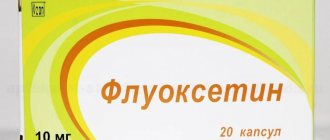About five percent of the world's population experiences panic attacks. Usually these are young people between the ages of twenty and thirty. Moreover, women are more susceptible to the disease. Panic is a normal reaction of the body to stress, but what are the reasons for its appearance, since there seem to be none?
A panic attack causes a powerful release of adrenaline, a hormone that involves preparing the body for an extreme situation and reacting to it, such as flight or fight. Breathing and heart rate increase, hyperventilation of the lungs occurs, which leads to dizziness, numbness and tingling of the legs and arms.
This is how the body usually reacts to sudden danger, this is normal. Thus, a panic attack is a malfunction of the body that causes the “emergency mode” to turn on, although this is not necessary.
More about panic attacks
Panic attacks are a sharp increase in anxiety and fears that are generated by an internal state and are not related to the current situation. A typical form of panic fear is accompanied by various vegetative-vascular and motor manifestations, such as:
- pronounced feeling of anxiety;
- fear for your health and life;
- cardiopalmus;
- increased sweating;
- sudden changes in blood pressure;
- trembling in the body;
- lump in throat;
- feeling of lack of air;
- abdominal pain and gastric disorders.
Panic attacks very rarely (about 1%) are a sign of serious diseases, such as heart defects, pheochromocytoma, oncology, etc., in the vast majority of cases they are associated with the psycho-emotional sphere and the autonomic nervous system. It is through the autonomic nervous system that all the mechanisms of panic attacks are realized.
Photo on Unsplash
An atypical form of a panic attack, the so-called “panic without panic,” can be manifested by temporary loss of hearing, voice, vision (a veil before the eyes), a person’s sense of taste and smell disappears, and motor skills are turned off. Such symptoms are usually observed in serious procedural mental disorders.
Panic attacks. Difficulties in diagnosis.
People suffering from the symptoms of panic attacks usually do not know where to turn. They visit the offices of a therapist, cardiologist, endocrinologist, psychiatrist, psychologist, but doctors do not detect any disturbances in the functioning of the body. Of course, it is advisable to undergo all possible examinations and pass all the necessary tests in order to exclude the development of serious physiological abnormalities. However, if, in the end, they tell you that you are absolutely healthy, but anxiety, tachycardia, insomnia and other symptoms continue to torment you, then most likely you suffer from panic disorder, which means the problem lies in a disruption of the autonomic nervous system , which can only be identified by an experienced neurologist-vegetologist.
Some patients with signs of panic attacks are diagnosed with vegetative-vascular dystonia (VSD) and told that they will have to live with such symptoms all their lives, alleviating them with medications: antidepressants and tranquilizers.
“I went to all the doctors because there were a lot of symptoms: my heart, shortness of breath, blood pressure, my stomach, bones, muscles ached, I felt constant anxiety. At first, rare panic attacks grew into a daily norm. The neurologist prescribed Coaxil, but the pills made me feel worse. I drank Coaxil for three months and barely got off it. Then the therapist prescribed me adaptol. It made me feel better, but only while I was drinking it, and as soon as I stopped drinking, everything started all over again. Everything was useless until I learned from friends about the “Clinical Center for Autonomic Neurology”,” patient, Arthur (46 years old).
The deep misconception that VSD and panic attacks cannot be treated can be dispelled if you visit a doctor who specializes specifically in disorders of the autonomic nervous system. Panic attacks can be treated and diagnosed! The main thing is to know where and how this can be done.
Signs of a panic attack
It's surprising that not everyone who suffers from panic attacks knows what it is. It often happens that a panic attack is mistaken for some kind of heart disease, because they have a number of similar symptoms.
A vegetative crisis (an alternative name for a panic attack) can begin with increased heart rate, chest pain, and a feeling of shortness of breath. Patients attempt to relieve symptoms with the help of heart medications, but in this case they will not have the expected effect.
Photo on Unsplash
Other signs of a crisis include trembling hands, dizziness, excessive sweating, chills, a feeling of unreality of what is happening, impending loss of consciousness, inexplicable uncontrollable fear. At the same time, the presence of fear is not at all necessary: at the moment of an attack there may not be a panic attack, but instead, sadness, tearfulness or aggression are felt.
The duration of a panic attack can vary. The average duration is from 15 minutes to half an hour. Frequency of attacks: from several episodes a day to a couple of times a month. In principle, this is not a dangerous phenomenon, but there is a risk that panic attacks can have a bad effect on the psychological state, which will only increase their number.
Treatment
After the attack ends, you need to gently insist on the need to see a doctor. Only a qualified medical professional is able to distinguish the disorder from more serious diseases, and also personally select a treatment regimen. The greatest effectiveness is shown by an adequate combination of psychotherapy and medications.
The course of psychotherapy for panic disorders (with and without agorophobia) averages from 10 to 15 sessions with a frequency of 1 time per week (for severe and frequent panic attacks, the first 4-6 sessions are 2 times a week). In case of a long-term course of the disease (over 2-3 years) with frequent and intense paroxysms of anxiety, antidepressants from the group of selective serotonin reuptake inhibitors (sertraline, paroxetine, escitalopram, etc.) can be used in parallel with psychotherapy, which are usually prescribed for a period of 6 to 9 months.
Domoratsky V.A. Psychotherapy of panic disorders / V.A. Domoratsky // Journal “Psychotherapy” - No. 11 (2016) - pp. 23-28.
Is it possible to cope on your own?
Panic attacks can be isolated throughout life, or recur regularly. For mild symptoms, use the following self-help techniques:
- Determine for yourself ways to “ground” (“anchor”). When the first signs of an increasing clinic appear, find support, a comfortable position.
- Breathing exercises. From using a package (reflexive inhibition due to an artificial increase in carbon dioxide concentration) to special gymnastics.
- Wearing a bracelet or elastic band on your arm. Pulling back and then hitting the skin shifts the focus of attention, distracting the person. It is important to focus on the sensations received. The actions are repeated until the condition normalizes.
- Remember pleasant moments for you, detailing everything that happens in your imagination, closing your eyes.
- Carrying with you a talisman attribute that helps to take control of emotions when in contact with it. The choice is individual - from your favorite keychain to a photo of your pet.
- Focus your attention in a positive way. Voice installation helps. Repeat loudly the phrases “I am calm”, “There is no threat to life”, “I am fine.” The words can be anything. Some patients begin to sing their favorite song or read poems.
- Take your mind off unpleasant sensations by taking a detailed look at what is happening around you. Mentally or out loud describe what the passerby is wearing, touch the grass under your feet. Attention is focused on sounds, smells, colors.
- Don't be afraid to ask others for help.
- Try to remember where you are, what you did before the attack, where you were going.
- Repeat to yourself or out loud phone numbers, familiar addresses, family members. Information can coordinate those trying to help.
Self-help techniques provide only temporary relief from symptoms. To achieve complete seizure freedom, it is important to identify and eliminate risk factors. Physical activity, a balanced diet, and adequate sleep are the first steps towards successful recovery.
Often people themselves may suspect the cause of increased anxiety, but do not know what to do about it. Recovery is facilitated by giving up bad habits, changing jobs or places of residence, and rethinking life attitudes. If, despite everything, attacks recur, you need to consult a doctor.
Drug therapy
The choice of treatment method remains with the psychotherapist, who rationally analyzes the characteristics of a particular patient. Pharmacotherapy in the CIS countries is more accessible and takes less time, but there remains a risk of symptoms returning after discontinuation of drugs. In addition, there are always individual contraindications.
However, psychopharmacotherapy may be necessary at the initial stage of treatment to increase the effectiveness of other techniques. Standard tactics include the following stages: stopping the attack, stabilizing the condition, and maintaining a supportive regimen (to prevent exacerbations). Doses of medications should be optimal, taking into account tolerability.
Sedatives
The effectiveness of purely sedative drugs for panic attacks has not been proven in clinical studies. However, the very presence of Corvalol or valerian extract in your purse is a calming factor for people prone to anxiety. The ritual of taking the drops allows you to distract yourself, and faith in their effectiveness is a powerful calming moment.
Tranquilizers
Benzodiazepine derivatives (Diazepam, Alprazolam, Buspirone) quickly relieve acute symptoms. Normalizes mood, relieving fear and anxiety. Normotimics have high pharmacological activity, therefore the list of contraindications is extensive. Particular caution is exercised when used in the elderly, those dependent on psychoactive substances, or those with severe concomitant diseases.
According to the recommendations of the Ministry of Health of the Russian Federation, tranquilizers are prescribed in short courses to stabilize the condition. The dose is titrated individually! The key point is strict adherence to the substance intake regimen. Discontinuation of pharmacotherapy is carried out gradually due to the risk of withdrawal syndrome.
Neuroleptics
In combination regimens, “mild” antipsychotics are sometimes used (Sonopax, Etaperazine), but no large studies have been conducted on their effectiveness. When stopping an attack, they help to quickly eliminate autonomic disorders and psychotic symptoms. They are not included in the first line of psychopharmacotherapy.
Nootropics
There is no objective evidence in favor of the effectiveness of vascular-metabolic or nootropic drugs for panic disorder. On the one hand, their use contributes to the progression of the disease and undermines the hope for a successful cure, since there is no practical value. On the other hand, we must not forget about the placebo effect, which may be sufficient for certain groups of patients.
Antidepressants
The effectiveness of such antidepressants for anxiety disorders has been reliably proven:
- SSRIs – selective serotonin reuptake inhibitors;
- venlafaxine;
- tricyclic antidepressants – clomiramine, ipyramine;
- other substances that are individually active for a particular patient.
The latest generations of SSRIs are the drugs of choice, including their safety profile. Each has side effects, so the dose is titrated individually, adjusted for tolerability. The main disadvantage is the need for long-term use (3-4 weeks) to develop the effect.
At first, they may slightly increase anxiety symptoms (temporarily). Antidepressants are the main group of drugs for maintenance and anti-relapse therapy. The course of treatment is individual, often exceeding 6-12 months.
Causes of panic attacks and risk factors
Panic attacks can be caused by any illness or experience. Most often they occur in people whose lives include at least one of the following factors:
- lack of physical activity;
- caffeine abuse;
- bad habits;
- suppression of emotions within oneself;
- lack of proper sleep and rest.
The tendency to panic attacks develops under conditions of an accelerated pace of life and chronic stress. Sometimes the condition develops against the background of mental disorders, but can also accompany coronary heart disease, mitral valve prolapse, thyrotoxicosis, depression, post-traumatic disorder, obsessive-compulsive disorder and other diseases.
Causes and development of panic attacks
Panic attacks occur when anxiety levels are extremely high.
If with phobias anxiety is increased and is looking for a way to rationalize itself, turning into a specific fear, then with panic attacks the level of anxiety is even higher and it is no longer looking for a specific object to realize. Anxiety just comes out and takes a person by surprise. This can happen anywhere: in the subway, in a bank, in a store, just on the street, etc.
As a rule, a panic attack occurs when a person’s anxiety is further “stimulated.” For example, a person finds himself in a crowded place and it seems to him that for some reason he looks “different” today and that everyone is looking at him. This can create fear in him of being judged and provoke PA.
Self-esteem
An important fact is that people suffering from panic attacks generally always have low self-esteem. They are very critical of themselves. And the triggers for panic attacks are often their thoughts about how they look from the outside and what others think about them. These obsessive thoughts cause internal tension and anxiety. Fear of condemnation makes a person afraid to express himself spontaneously. He fears that someone may not like this behavior of his and cause negative emotions in this dissatisfied person, which he can somehow express.
Comfort zone and anxiety control
Very often, the comfort zone of anxious people is very narrow and cramped, and it is very easy to accidentally push them out of there. At the same time, any exit from the comfort zone causes additional anxiety and threatens the appearance of another panic attack.
With all this, being in the comfort zone, a person with this anxiety-phobic disorder does not feel completely calm. He's still worried. But being in familiar conditions, he learns not to notice his excitement.
When everything is under control, such a person has the mental resource to repress his anxiety, not to think about what causes it, being in the illusion of comfort. He fills his head with unimportant considerations that have no effect on anything.
But as soon as he leaves the usual conditions of existence, his neuropsychic energy becomes aimed at adapting to a changing environment and there is no resource left for restraining anxiety, which leads to its release in the form of panic attacks.
Upbringing
If during psychotherapy we dive into the deep layers of the psyche and look for the origins of a given mental disorder, then we will always come to childhood and the relationship that this person had with his parents.
Parents of a person with panic disorder constantly emphasized his inferiority in one way or another:
- They might not believe that he would succeed;
- They often shamed him, making him feel unworthy of something or guilty of something;
- They were constantly saying that someone was better than him;
- In general, by all means they taught him to depend on someone else’s assessment so that he would meet some non-existent standards.
The fact is that a person with PA does not allow himself to criticize the upbringing that his parents gave him and idealizes them, forgetting that they are ordinary people who, like everyone else, tend to make mistakes. This approach to one’s personality and the personality of one’s parents becomes one of the reasons for the occurrence of PA.
Agoraphobia. Panic anchors.
A special type of phobia can also be formed based on panic attacks.
If with the usual version of the formation of phobias some kind of logic of events is needed, then for the formation of phobias under the influence of panic attacks it is not needed. Since a panic attack can happen anywhere and anytime, a phobia can form for anything. And such a phobia will not be one, but there will be many of them, since each place and circumstances in which a panic attack occurred will become an anchor reminding a person of the incident in which he fell into a panic. And during the course of the illness, such anchors will accumulate more and more, due to the fact that a panic attack happens each time in new places and in new conditions. Thus, panic attacks expand their domain and over time a person begins to be afraid to leave the house, since a phobic state arises in him almost everywhere.
The result is agoraphobia
- fear of crowded places.
Stages of panic attacks
There are three stages of a panic attack:
- initial – warning signs of a panic attack appear. This may be some anxiety, uncertainty, heaviness in the head, inexplicable discomfort;
- expanded - a feeling of anxiety and fear appears, which steadily increases. It is at this stage that the main symptoms affecting the cardiovascular and respiratory systems occur. When anxiety and fear turn into panic, a person can no longer control himself;
- final - a feeling of lethargy, fatigue and weakness appears.
Foreplay can last up to half an hour, this time is quite enough to provide assistance and get rid of a panic attack. Panic, when a person is in a state of derealization, lasts on average about 30-40 minutes, maximum an hour. After a panic attack ends, it sometimes takes a day or more to fully recover and get rid of the consequences.
Photo by Max Nelson on Unsplash
Most often, panic attacks occur in the evening and at night, which can cause chronic insomnia, which in turn is a risk factor for the development of a panic state.
Admit you are having a panic attack
How to understand that you are having a panic attack and get rid of it? During a panic attack, a person catastrophizes what is happening: it seems that it is a heart attack, stroke, death, madness, that you are fainting or about to vomit.
Tell yourself mentally several times: “This is not a disaster, this is a panic attack.” The intensity of your symptoms will decrease and you will begin to regain consciousness.
Beck Scale: Test for Anxiety
Symptoms of panic attacks
Symptoms characteristic of panic attacks are conventionally divided into two groups: physical and mental. The first group includes bodily sensations, and the second – mental ones.
Mental symptoms of panic attacks:
- Fear of death;
- lump in the throat;
- a feeling of unreality of what is happening;
- pre-fainting state.
Physical symptoms of panic attacks:
- Frequent heartbeat;
- hot flashes;
- chills;
- increased sweating;
- dry mouth;
- diarrhea;
- chest pain;
- numbness of the limbs;
- nausea and vomiting;
- weakness;
- dizziness.
Sometimes a panic attack follows an atypical scenario in the absence of fear and other manifestations. Instead, one of the body’s functions is temporarily disrupted - vision is lost, the gift of speech is lost. Another name for such attacks is hysterical neurosis.
Panic attacks. Modern diagnostic methods.
Only a qualified neurologist-vegetologist can diagnose panic disorder, which manifests itself as panic attacks, identify its symptoms and prescribe optimal treatment.
At the initial examination, the vegetarian doctor must examine the patient’s normal reflexes, his muscular system, sensory organs, cognitive functions (memory, speech, perception), assess the general psycho-emotional state of the patient, taking into account all his complaints in order to collect a complete picture of the disease.
Next, there are several methods for diagnosing autonomic nervous disorder. One of them is the study of heart rate variability.
The patient performs a simple load: first he lies on his back, and after a few minutes he gets to his feet. In this way, we simulate a standard everyday situation when the minimum load is placed on our body. During this time, sensors attached to the patient's chest record the rhythm of his heart, and the doctor then compares the changes in rhythm in both positions. Such a study shows how adapted the human body is to the usual minimum load, which our autonomic nervous system normally copes with every day without the slightest difficulty.
How it works?
In a healthy state, our body responds adequately to any “stress”, any load (mental, physical, emotional). Therefore, when a healthy person gets up, the sympathetic part of the autonomic nervous system is activated in his body and the hormone adrenaline is produced, which means the heartbeat quickens. When a person lies down, his body should normally be in the mood for rest and relaxation. At the physiological level, this manifests itself as follows: the parasympathetic department of the autonomic nervous system becomes active and the hormone acetylcholine is released, which extinguishes the activity of adrenaline, and a phase of relaxation and replenishment of the body’s reserves begins.
But in patients with symptoms of panic attacks, an abnormal change in heart rhythms is observed: that is, when a person lies down, his pulse quickens and becomes faster and faster. That is, when a person gives his body the command to tune in to rest, the body understands the opposite - and prepares to run a short distance race. This is why people with disorders of the autonomic nervous system so often cannot sleep at night and never feel rested and alert.
Thus, the doctor concludes that the harmonious functioning of the sympathetic and parasympathetic parts of the nervous system is disrupted. This means you can move on to the next stage of the examination.
Among the innovative methods for diagnosing panic disorder are studies of the autonomic nervous system using infrared thermography. In an infrared image, a thermal imager clearly shows in which nodes (ganglia) of the autonomic nervous system the work is disrupted. It is with these vegetative nodes that the neurologist-vegetologist will subsequently work.
“Serious scientific research over the last decade has shown the high reliability and reliability of thermography. This allows this method to be used in medical practice to make a diagnosis in complex cases,” James Mercer, Professor, President of the European Thermography Society (EAT).
| Fig. 1 – Thermal image before treatment of panic attacks and VSD – the functioning of the vegetative node in the cervical region is disrupted (colors – red and orange) | Fig. 2 - Thermal image of the same patient after treatment of panic attacks and VSD - the temperature in the vegetative node of the cervical spine has returned to normal (colors - blue and green) |
After treatment, you can take a repeat infrared photo, in which you will notice progress from the completed course. Areas with abnormal temperatures (bright red or dark blue) will change color in the image because their temperature regime is closer to normal.
Diagnosis of panic attacks
Even a doctor cannot always separate the symptoms characteristic of a panic attack from the manifestations of another disease. To clarify the diagnosis, the skin is examined, reflexes are checked, and the abdomen is examined.
Photo by Ani Kolleshi on Unsplash
The main methods of examination are electrocardiography, listening to the lungs and heart, measuring pulse and oxygen saturation. A panic attack is diagnosed based on a set of data obtained.
What to do during a panic attack
- Autotraining . The patient must tirelessly convince himself during a panic attack that this is a temporary phenomenon, its symptoms are not dangerous and will soon pass.
- Technique of switching attention . A panic attack can be easily dealt with if you stop thinking about it. This can be easily done by simply switching your attention to something. Slowly count to 50, do simple addition or multiplication in your head, talk to someone about an abstract topic.
- Normalization of the respiratory process . A person often experiences shortness of breath during a panic attack. This happens due to an imbalance in the gas balance in the blood. It needs to be normalized as soon as possible. To do this, you need to press a paper bag very tightly to your nose and mouth, and slowly inhale and exhale into it for about thirty seconds. In the absence of a package, you can use folded palms.
Panic attack. Emergency self-help.
First, learn how to manage your panic attacks yourself to control them and reduce the intensity of your panic attack symptoms.
Try practicing breathing techniques.
Breathe through your diaphragm (belly), in through your nose and out through your mouth slowly and calmly. For example, for 5 counts – inhale, for 10 – exhale.
“Some patients benefit from progressive muscle relaxation. If your muscles are very tense during a panic attack, try tightening your facial muscles: tense your jaw for 8 seconds - then relax, tense your lips for 8 seconds - relax. Repeat the exercise with your arms (palms, forearms) and switch to the next muscle group, for example, the calf muscles, the feet. Alternate tension and relaxation of all parts of the body will help relax the muscles and distract thoughts,” recommendations of a neurologist-vegetologist (“Clinical Center for Autonomic Neurology”).
During a panic attack, try to distract yourself and not think about the symptoms that are bothering you. Use psychological techniques. Visualize some place where you felt good: a house, a vacation spot, a cottage, a forest, a sandy beach - whatever your heart desires. And imagine in detail the entire environment that surrounds you there: a soft chair, a fluffy cat, the smell of pine trees, the crunch of branches under your feet, birdsong, warm sand, etc. Think in advance about where it would be better for you to “go” when you have another panic attack in order to distract your thoughts from its symptoms.
Keep a diary of panic attacks that you can refer to in critical situations. This way you can remind yourself that there is nothing to be afraid of, and the next panic attack will soon pass.
Medications to treat panic attacks
Drug treatment of panic attacks includes the use of the following types of medications:
- tranquilizers;
- neuroleptics;
- antidepressants;
The main disadvantage of these methods is the instability of the effect after taking a course of medications. For some, after a year, for others even earlier, relapses of panic attacks may occur. Doctors attribute this to the fact that the patient has not developed the skills to manage emotions in stressful situations.
Pharmacotherapy
It is impossible not to mention the drug treatment of panic attacks. There are many doubts about this method. Some patients say that stuffing themselves with chemistry is not a solution. Perhaps in some sense they are right. Without working on yourself, no one can give a 100% guarantee that the disease will not recur after completing the course of drug therapy.
But still, the positive role of drugs cannot be denied. They allow you to balance the emotional background, eliminate acute anxiety, relieve tension, normalize mood, provide an opportunity to relax, and improve sleep.
Typically, antidepressants and tranquilizers are prescribed to treat panic disorder.
Without awareness of your problem, of course, it is difficult to overcome the disorder forever. But pharmaceuticals will help you achieve this faster and easier.
Based on this, it is strongly recommended to combine psychotherapeutic and drug treatment. The combination of these methods is ideal for combating panic attacks.
Consequences of a panic attack
Constantly recurring panic attacks can lead to neurotic personality changes, when a person develops internal blocks on a subconscious level that do not allow him to receive full and effective help. When a person gets used to his neurosis, any attempts to bring him out of this state encounter active resistance. This can lead to loss of ability to work, social maladjustment and disability.
If the attacks are pronounced and occur very often, the person becomes antisocial. In this case, to get rid of them, you need the help of a psychiatrist or psychotherapist and treatment in a hospital setting.
Is it possible to go crazy from panic attacks?
Manifestations of a panic attack are often a feeling of unreality of everything that is happening around, disorientation in space and time, loss of control over one’s actions, deeds and the world around us. All these symptoms are often accompanied by a fear of going crazy.
Many people who have survived an attack do not know how to get rid of panic attacks forever, and are afraid of developing psychosis, schizophrenia and other serious mental disorders. To dispel these fears, you need to know the nature of panic attacks.
Photo by Ian Espinosa on Unsplash
During a panic attack, the rhythm of breathing involuntarily changes, it becomes more frequent, which is a natural protective reaction of the body - preparation for fight or flight in any dangerous situation. As a result, excessive amounts of oxygen enter the blood. This leads to acidification and dilation of brain vessels, which, in turn, causes a feeling of derealization.
This condition increases the fear of the possibility of dying or going crazy. Every patient must understand that this is a natural reaction of the body, in which no changes occur in the central nervous system, and all fears are only subjective sensations that have no neurophysiological basis. A qualified psychologist at our center can explain all this to him.
How to get rid of panic attacks and fear
To get rid of panic attacks, it is necessary to observe a strict sleep and wakefulness regime, stop using various stimulants, normalize the psycho-emotional state, and also receive rational and competent psychotherapeutic help. It includes:
- Cognitive training will allow the patient to understand what a panic attack is and why he should not be afraid of it - although the sensations are very unpleasant and sometimes quite scary, he will not die from them or become disabled. Understanding and awareness of this is the key to successful treatment and getting rid of attacks.
- In case of severe panic attacks, when correction of the condition is required, it is worth using anti-anxiety drugs - antidepressants.
- Emotional and mental conflicts are usually programmed in childhood. To get rid of panic attacks, you need to find out their root causes. By learning to manage your thoughts, you can learn to manage your fears. We will help you with this.
Breathe slowly
How to get rid of panic attacks? Slow breathing helps to cope with a rapid heartbeat and shallow breathing, which are both symptoms of a panic attack and its provocateurs. By breathing slowly, you send a signal to your brain to calm down. This is one of the most effective physiological ways to stop a panic attack.
Focus on your breathing. Inhale for one-two-three-four, hold your breath for one second, exhale for one-two-three-four. Look at your stomach (even through clothes): how it inflates as you inhale and retracts as you exhale.
Treatment and prevention of panic attacks
Treatment of panic attacks should be aimed at eliminating the source of the attacks and smoothing out the unpleasant symptoms. The optimal way to combat panic attacks is a competent combination of medications and non-drug therapy. The main methods of treating attacks:
- taking antidepressants as prescribed by a doctor;
- psychotherapy;
- physiotherapeutic procedures (MDM of the cerebral cortex, electrosleep, chromotherapy, aromatherapy, reflexology);
- relaxation massage;
- physiotherapy.
Additional treatment of panic attacks is practiced with herbal decoctions with a calming effect - infusions based on mint, lemon balm, chamomile, motherwort, etc. It is necessary to reduce the amount of stress to a minimum. Spicy foods, strong tea and coffee, and alcohol should be excluded from the diet.
Panic attacks symptoms and treatment
To successfully treat panic attacks, an integrated approach is required; one of the modern treatment methods is complex physiotherapy. The treatment is aimed at the root cause of the disorder, which is rooted in the physiological disruption of the body. Psychotherapy can also be used as a method of treating panic attacks, but only as an auxiliary link. In some cases, a psychotherapist can alleviate the condition and reduce the severity of panic neurosis.
One of the clinics in Moscow that specializes directly in disorders of the autonomic nervous system is the Clinical Center for Autonomic Neurology. The clinic’s doctors have extensive experience working with panic attacks: they know how their symptoms manifest themselves and what treatment will be optimal in a given case. As part of a comprehensive physiotherapy course, you can be offered:
— undergo a course of intravenous laser therapy
— infrared laser therapy
— magnetic therapy
— as well as a course of color pulse correction of suprasegmental autonomic disorders (color therapy)
All methods are aimed at working directly with damaged vegetative nodes.
The targeted effect on the nerve nodes in its effect on the body is reminiscent of acupuncture in oriental medicine (acupuncture), but the action of the laser is much more accurate and is based on science, and not on ancient intuitions, especially since it is supported by thermal imaging images that show the localization of the vegetative node in the human body accurate to the millimeter.
“I underwent 2 courses of acupuncture with symptoms of panic attacks. After the first course, which lasted a month, I felt better - I just sighed. But a month later I had to return. Another month after the second course, my body completely returned to its previous deplorable state. The effect faded away again. Acupuncture gave me only temporary relief. The effect of the laser was incomparably more effective,” patient Alexander (43 years old).
For most patients, it is enough to undergo one course of comprehensive physical therapy to feel significantly better, and after a recovery period that lasts from 4 to 6 months, to completely get rid of all symptoms of panic attacks. In more advanced cases, several courses may be required. However, noticeable improvements are noticeable after the first treatment session.
“During laser therapy sessions, I felt relaxed and even fell asleep. After the first sessions, the anxiety noticeably subsided and my head cleared. Panic attacks after completing the course of treatment became rare and short-lived. There was one case of exacerbation in the subway, but the doctor warned me that this was possible during the recovery period. I happily completed the second course of treatment a year later and now I feel even better than when I didn’t have panic attacks yet,” patient Sergei (34 years old).










